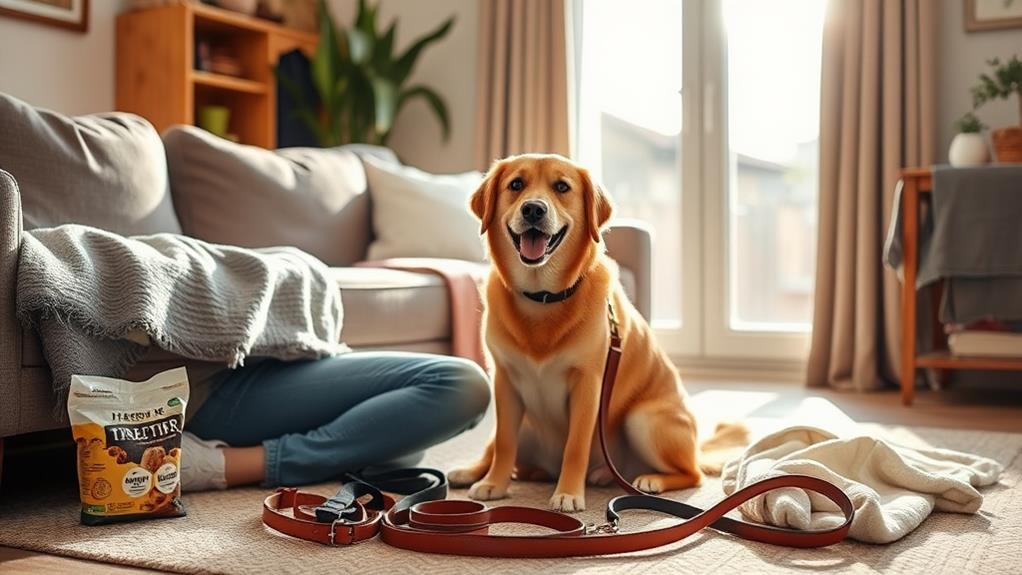You can conquer your dog's separation anxiety with these five effective training tips. First, understand your dog's behavior and recognize signs of distress. Start gradual desensitization by leaving them alone for short periods, gradually increasing the time. Establish a calm departure routine to help them feel secure. Provide comfort items like your worn clothing or favorite toys to ease their anxiety. Finally, engage in interactive play to boost their confidence and reduce stress. Implementing these strategies will create a more relaxed environment for both you and your dog, and there's more helpful advice waiting for you!
Understand Your Dog's Behavior
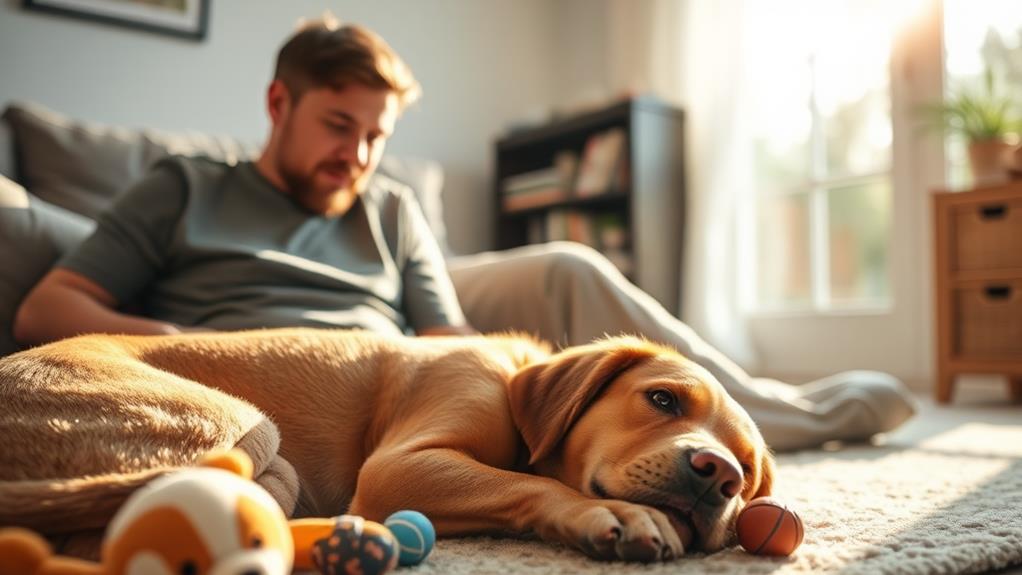
Understanding your dog's behavior is indispensable when addressing separation anxiety. Dogs often exhibit signs of distress when you leave, and recognizing these signals can help you respond effectively. You might notice excessive barking, destructive chewing, or even attempts to escape. These behaviors are your dog's way of expressing their discomfort and fear of being alone.
Pay attention to your dog's body language. Signs like pacing, drooling, or hiding can indicate anxiety. When you leave the house, your dog may follow you around or become overly clingy; this attachment can stem from fear of separation. If you've noticed these behaviors, it's pivotal to take them seriously.
Also, consider your dog's history. If they've experienced abandonment or frequent changes in environment, they might be more prone to anxiety. Each dog is unique, so understanding their individual triggers is key.
Lastly, don't overlook the importance of routine. Dogs thrive on structure, and a consistent schedule can provide comfort. By being aware of your dog's anxieties and triggers, you can develop a plan to help them feel more secure when you're not around. This understanding lays the groundwork for effective training strategies.
Gradual Desensitization Techniques
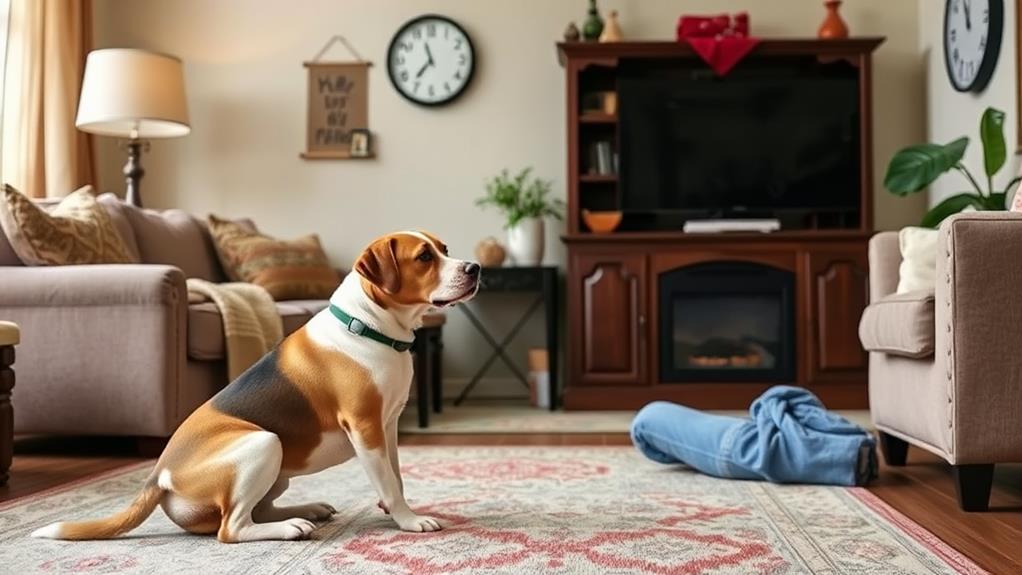
One effective method to help your dog overcome separation anxiety is through gradual desensitization. This technique involves slowly getting your dog used to being alone, reducing their anxiety over time. Start by leaving your dog alone for just a few minutes. Make sure they're in a comfortable space with their favorite toys or treats.
As your dog becomes more comfortable, gradually increase the time you're away. Monitor their behavior during these short absences. If they show signs of distress, shorten the duration and try again later. It's important to remain calm and avoid making a big fuss when you leave or return, as this can heighten their anxiety.
Incorporate positive reinforcement by rewarding your dog with treats or praise when they remain calm during your absence. This will help them associate your departures with something positive. You might also consider providing mental stimulation, like puzzle toys, to keep them engaged while you're away.
Patience is key. Gradual desensitization can take time, but with consistency and reinforcement, your dog can learn to feel more secure when you're not around.
Establish a Departure Routine
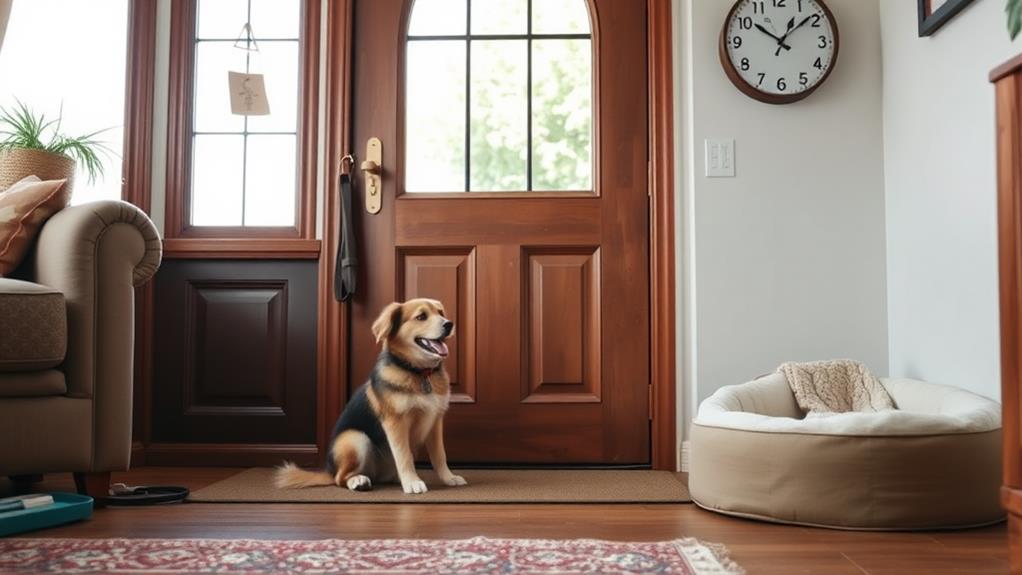
Creating a consistent departure routine can substantially ease your dog's separation anxiety. When you establish a predictable pattern before you leave, your dog learns what to expect, reducing their stress. Start by choosing specific actions to perform each time you prepare to leave. This could include putting on your shoes, grabbing your keys, or giving your dog a quick belly rub.
Make sure to keep your routine calm and low-key. Avoid long goodbyes filled with emotional farewells, as this can heighten your dog's anxiety. Instead, keep your departure brief and matter-of-fact. You might even consider practicing your routine without actually leaving, so your dog becomes familiar with the process.
Consistency is key, so try to follow the same steps each time you leave. This repetition helps your dog feel secure, knowing that the routine precedes your departure. You can also incorporate simple cues, like a specific phrase or signal, to indicate you're leaving. Over time, your dog will associate these cues with your absence, helping them feel more at ease. With patience and practice, this routine can transform your dog's experience when you leave home.
Provide Comfort Items
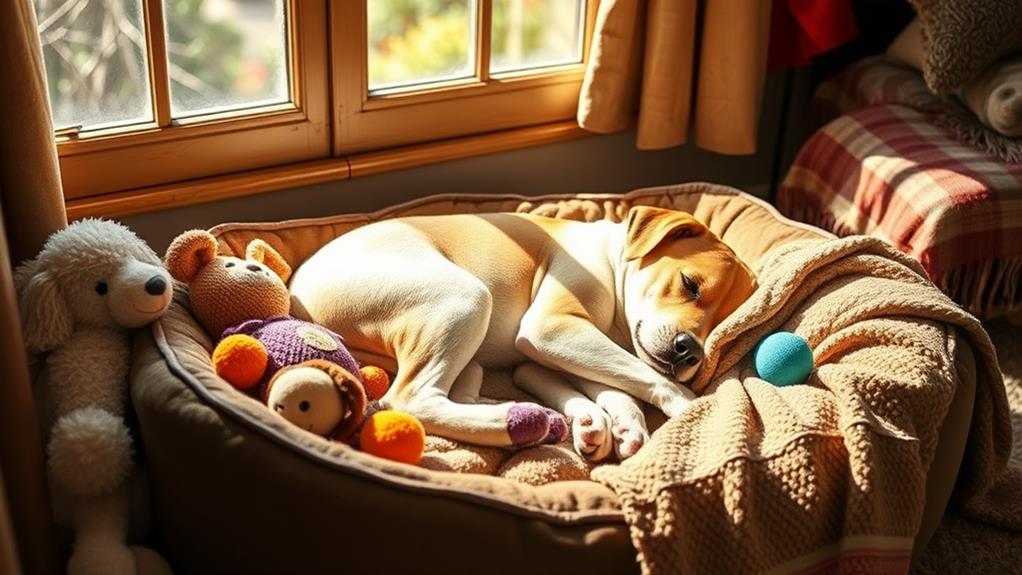
How can comfort items help ease your dog's anxiety when you're away? Providing your furry friend with items that smell like you or offer comfort can greatly reduce their stress levels. These items create a sense of security, making your absence feel less challenging.
Consider using the following comfort items:
- Your worn clothing: A shirt or towel that carries your scent can be incredibly soothing.
- Favorite toys: Chew toys or plush companions can divert their attention and provide comfort.
- Blankets: A familiar blanket can create a cozy spot for your dog to relax, promoting a sense of safety.
- Interactive puzzle toys: These can keep your dog engaged and mentally stimulated while you're away.
Engage in Interactive Play
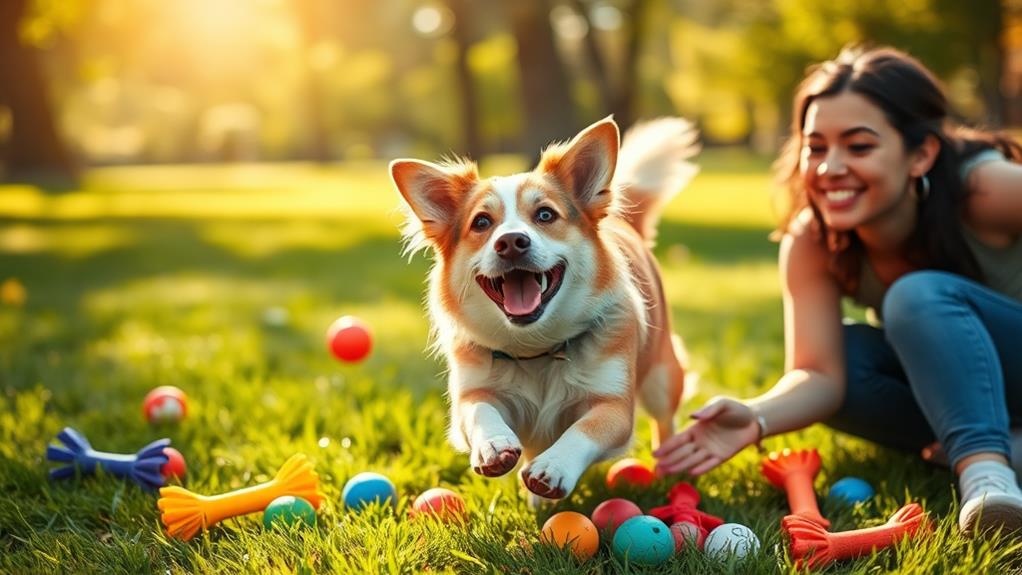
Engaging in interactive play can be a game changer for dogs struggling with separation anxiety. When you spend quality time playing with your dog, you not only strengthen your bond but also help them release pent-up energy and anxiety. Activities like fetch, tug-of-war, or hide-and-seek stimulate their minds and keep them physically active, which can dramatically reduce feelings of stress.
Try to incorporate interactive games into your daily routine, especially before you leave. This creates positive associations with being active and can help your dog feel more relaxed during your absence. Use toys that require interaction, like puzzle feeders, to keep their minds occupied when you're not around.
It's essential to make the playtime focused and engaging. Keep your energy high and use encouraging words to motivate your dog. The more fun and engaging the play, the better it can distract them from your departure.
Frequently Asked Questions
What Are the Signs of Separation Anxiety in Dogs?
You'll notice signs like excessive barking, destructive behavior, or attempts to escape when you leave. Your dog might also pace, drool, or exhibit clinginess. Recognizing these behaviors is essential for addressing their discomfort.
Can Separation Anxiety Affect Dogs of All Breeds?
Absolutely, separation anxiety can impact any dog breed. Just picture a Lab pacing anxiously or a Chihuahua barking incessantly. It's a universal issue, regardless of size or temperament, and it requires your attention and care.
How Long Does It Take to See Improvement?
You'll likely see improvement within a few weeks, but it varies based on your dog's specific needs and your training consistency. Patience and dedication are key to helping your furry friend feel more secure.
Are There Specific Training Tools or Toys Recommended?
Think of training tools as a bridge connecting you and your dog. You'll find puzzle toys, chew toys, and interactive feeders helpful. They keep your dog engaged, easing anxiety and strengthening your bond during alone time.
When Should I Consult a Professional Trainer or Vet?
If you're noticing persistent behavioral issues, like excessive barking or destructive habits, it's time to consult a professional trainer or vet. They can provide tailored advice and help you address your dog's specific needs effectively.
Conclusion
By tackling separation anxiety with these tips, you're not just training your dog; you're building a bond that rivals the loyalty of legendary heroes. Remember, patience is key as you guide your furry friend through their fears. Like Odysseus traversing the stormy seas, stay committed to your journey together. With love and consistency, you'll both emerge stronger, turning anxious departures into confident goodbyes. So, embrace the adventure, and watch your dog's anxiety fade away!

